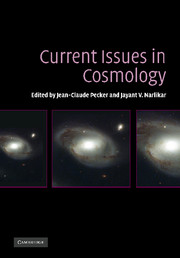Book contents
- Frontmatter
- Contents
- List of contributors
- Preface
- Part I Observational facts relating to discrete sources
- Part II Observational facts relating to background radiation
- Part III Standard cosmology
- Part IV Large-scale structure
- Part V Alternative cosmologies
- Part VI Evidence for anomalous redshifts
- 15 Anomalous redshifts
- 16 Redshifts of galaxies and QSOs: The problem of redshift periodicities
- 17 Statistics of redshift periodicities
- 18 Local abnormal redshifts
- 19 Gravitational lensing and anomalous redshifts
- Part VII Panel discussion
- Index
17 - Statistics of redshift periodicities
Published online by Cambridge University Press: 15 December 2009
- Frontmatter
- Contents
- List of contributors
- Preface
- Part I Observational facts relating to discrete sources
- Part II Observational facts relating to background radiation
- Part III Standard cosmology
- Part IV Large-scale structure
- Part V Alternative cosmologies
- Part VI Evidence for anomalous redshifts
- 15 Anomalous redshifts
- 16 Redshifts of galaxies and QSOs: The problem of redshift periodicities
- 17 Statistics of redshift periodicities
- 18 Local abnormal redshifts
- 19 Gravitational lensing and anomalous redshifts
- Part VII Panel discussion
- Index
Summary
Abstract
Claims that ordinary spiral galaxies and some classes of QSO show periodicity in their redshift distributions have been investigated using high-precision data and rigorous statistical procedures. The periodicities are broadly confirmed. They are easily seen by eye in the data sets. Observational, reduction, or statistical artefacts do not seem capable of accounting for them.
Introduction
“Anomalous redshift” claims have appeared in the literature for about 30 years now and are associated with a few astronomers such as H. Arp, the Burbidges, and W. G. Tifft. The claims are controversial and the author has been engaged in a long-term project to examine them objectively. Probably the easiest to test are the claims of redshift periodicity. The search for periodicity in noisy data has a large literature and is a well-understood process. Three such claims have so far been examined, namely the 72 km s−1 periodicity (in the Coma cluster), the 36 km s−1 galactocentric periodicity (in wide-profile field spirals), and the periodicity 0.089 in log10(1 + z) (in the redshifts of QSOs close to bright, nearby spirals).
The approach in all cases has been the same: To use high-quality redshift data, not previously used in formulating the hypothesis, and rigorous statistical methods. Modern computing power now allows one to generate large numbers of synthetic data sets with which the real data can be compared. Here I describe the overall approach and results rather than the technicalities. The latter can be found in papers in the reference list.
- Type
- Chapter
- Information
- Current Issues in Cosmology , pp. 207 - 216Publisher: Cambridge University PressPrint publication year: 2006
- 2
- Cited by



